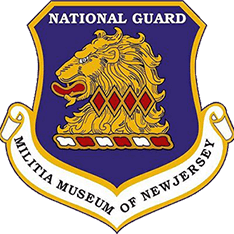CENTER FOR U.S. WAR
VETERANS' ORAL HISTORIES
World War II
Elmer R. Umbenhauer
World War II Oral History Interview
US Army, 4th / 8th Armored Divisions
Date: October 6, 2003
Interviewer: Carol Fowler
Summarizer: Macartan McCabe
Veterans History Project
Summary

Elmer Umbenhauer was born and raised in Stony Creek Mills, Pennsylvania. Before entering the service, he was a recently graduated high school student who worked as a playground leader. His responsibilities in that position included entertaining children who visited the playground through activities and games. In September 1943, at age 18, Umbenhauer volunteered for the service, since he knew that he would be drafted anyway and would rather volunteer on his own terms. Both of his brothers had already joined the military. One of his brothers was unfortunately killed in 1944 while fighting in Europe.
Umbenhauer was sent to Fort Benning, Georgia, for basic training, which he described as his “introduction into the service.” He went from a carefree life in Pennsylvania, to a strict and regimented life in the army, over which he had little control. It was a difficult adjustment, but Umbenhauer became acclimated to military life by the end of his basic training.
On completion of his course at Fort Benning, Umbenhauer was sent to Illinois for advanced training as an army engineer. He was there for six months before the army pulled him and other soldiers out of engineering school, since the situation in Europe was changing and they needed more bodies on the front line. Umbenhauer was transferred to Camp Polk in Louisiana, where he became part of the 8th Armored Division, nicknamed the “Thundering Herd.”
Camp Polk was a rude awakening for Umbenhauer, as he joined the 8th Armored Division during maneuvers designed to create a combat simulation that would replicate what he later experienced in the European Theatre. He was at Camp Polk for three months, during which he developed expert marksmanship with the M1 rifle, as well as learned how to dig foxholes and build the endurance needed for long marches. His efforts earned him the Expert Infantry Badge, which Umbenhauer did not rate highly. In his opinion, the Expert Infantry Badge is nothing compared to the prestige that comes with the Combat Infantry Badge. He also played in the Division’s baseball team, which involved traveling to other bases to play against other divisions.
After Camp Polk, the 8th Armored Division was transferred to Camp Kilmer, New Jersey to prepare for their trip to Europe. They were at Camp Kilmer for a week before heading to New York Harbor. Umbenhauer was able to visit his family and girlfriend in Philadelphia before sailing to the United Kingdom. He recalled his trip across the Atlantic as an interesting experience. Umbenhauer vividly remembered sneaking in a view of the Statue of Liberty from the bulkhead of the transport ship, as the officers on board made everyone go below deck when they were departing New York City. The trip across the North Atlantic took two weeks; during those two weeks, he experienced sea sickness as well as the convoy fighting off U-boat raids.
The 8th Armored Division was able to successfully dock in Southampton, England. From Southampton, they went to Tidworth, where they had an encampment set up. He remembered Tidworth as being cold, wet, and muddy, which was made even more miserable by the lack of a proper barracks. Umbenhauer was, however, able to visit London and to see all the major sights of the British Capital. While in Tidworth, D-Day occurred, and the invasion of Italy was in full-swing.
After Tidworth, the 8th Armored Division received orders to cross the channel. Umbenhauer recalled the crossing of the channel to be like the Atlantic crossing, in that the sea was rough; fortunately, no U-boats were encountered. They landed in snowy Le Havre, France, then headed east toward the Rhineland-Palatinate region of Germany.
Once they arrived at the front, Umbenhauer vividly remembered seeing the dejected looks of the men of the 94th Infantry Division who had been fighting the Germans at the German town of Serrig. The defending Germans had a Panzer division with formidable Tiger tanks and an infantry division. This battle was on the fringes of the Battle of the Bulge, which coincided with one of the coldest winters of the 20th century. Despite being well-equipped, the cold was still unbearable, and the Americans could not dig defensive foxholes due to the frozen soil. Motorized equipment often broke down due to the frigid temperatures as well. He remembered having his feet suffer frostbite. Those who did have frostbite would be taken off the frontline to receive treatment and would be back in a matter of days.
Following victory at Serrig and several small German towns, the 8th Armored Division detached from the 3rd Army and advanced to Maastricht, Netherlands which was 250 miles away. Umbenhauer remembered seeing abandoned vehicles on the side of the road that were wrecked by German ambushes or vehicular accidents. Once the Division reached the Rhine, a crossing had to be created while under fire from German artillery, small arms, and even tanks. He recalled how effective the Allied air support was in dispersing the German resistance. Once the Rhine was crossed, Umbenhauer thought they were going to Berlin, but they instead received orders to secure the industrial Ruhr which also had a pocket of German soldiers.
German resistance in the Ruhr Valley was surprisingly minimal. Nazi Germany was desperate at this point and was poorly supplied. Umbenhauer remembered some of the captured Germans being children, much younger than him. There was still tragedy as his squad leader and best friend was killed during a firefight in a German village, and only a few weeks before V-E Day. Another friend of his was shot in the leg, but Umbenhauer joked that this was a “million-dollar wound” as it was bad enough to leave the front, but not severe enough for amputation. The 8th Armored Division captured German munition factories that were operated by slave labor, mostly from Eastern Europe. They liberated a concentration camp that was a satellite of Buchenwald. The situation was so bad at that camp that his division fed their own food rations to the Jewish people.
Once the war in Europe concluded, Umbenhauer was transferred to the 4th Armored Division, which was tasked with guarding prison camps in Czechoslovakia. His remaining time in Europe was memorable, as he became close friends with a Czechoslovakian family who operated a brewery. After his departure from Czechoslovakia, Umbenhauer wrote letters to them, yet stopped writing after he did not receive a response, fearing that the Soviets would punish the family for writing to an American. He was able to travel all over western Europe, visiting Rome and the Alps. A more sobering memory was being present at General Patton’s funeral, where Umbenhauer served in Patton’s Honor Guard. He became increasingly homesick, but was unable to go home since he did not possess enough points. (i.e. Not being married or having children)

Umbenhauer received his honorable discharge in 1946 and departed Europe from Le Havre. He remembered being greeted by bands and fire ships when his ship entered New York Harbor. Although Umbenhauer was treated as a hero, he was anxious to return to civilian life. He later took advantage of the GI Bill, attended college that summer and married his high school sweetheart. Later in life, Umbenhauer would return to Europe, specifically Belgium, where the Siege of Bastogne took place. The Belgians were incredibly accommodating and were extremely thankful for his contribution to the liberation of their country. He belonged to both the Veteran of Foreign Wars as well as the (South Jersey Chapter) Veterans of the Battle of the Bulge of Cape May County.
Elmer Umbenhauer died on May 18, 2020 after a brief illness at the age of 94, while listening to the sounds of the ocean, with his daughter and son-in-law by his side.
Additional Resources:
- Boyhood, Baseball, and Battle: The Story of Elmer Umbenhauer
- Press of Atlantic City – Battle of the Bulge vets recall ‘Winter without Christmas’
- Cape May Herald – Battle of the Bulge Vets Dine, Reminisce
- Cape May Herald – ‘Bulge’ Vets Mark 75 Years Since Battle
- The Philadelphia Inquirer – Area vets recall freezing Battle of the Bulge

